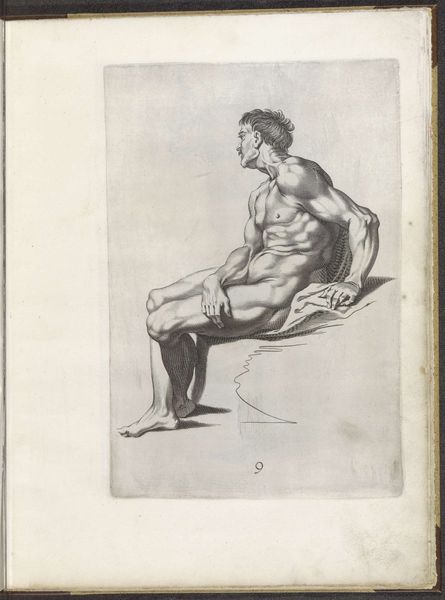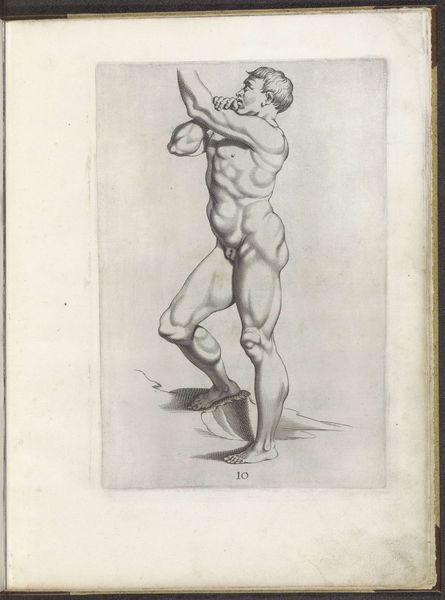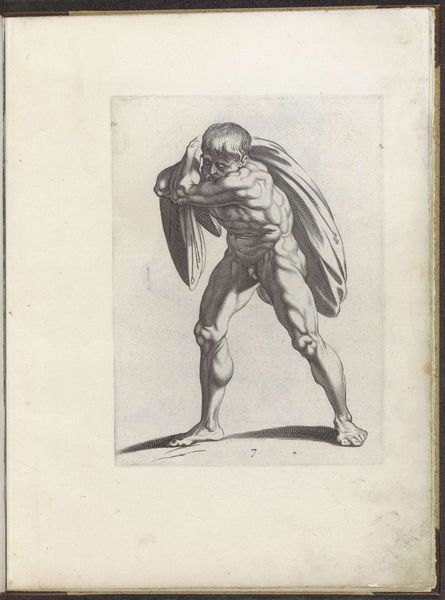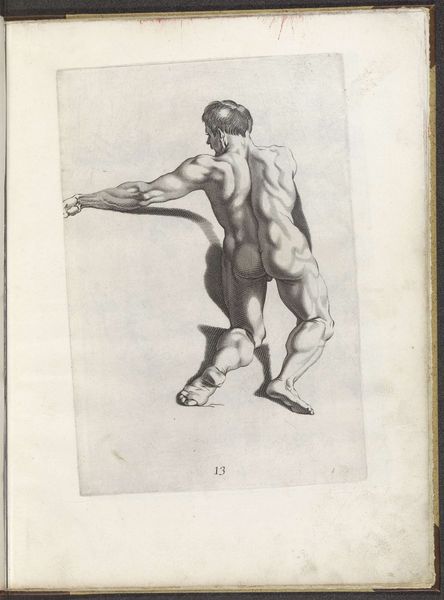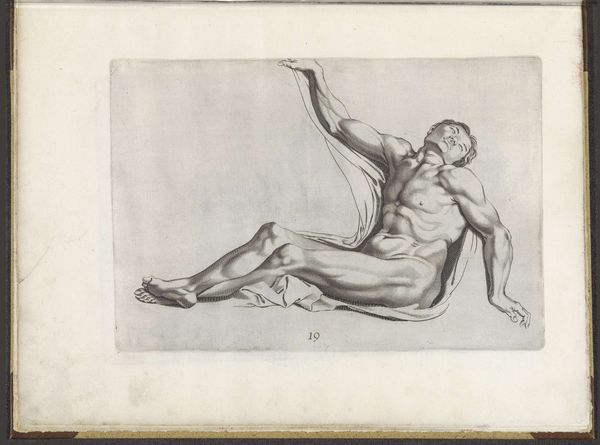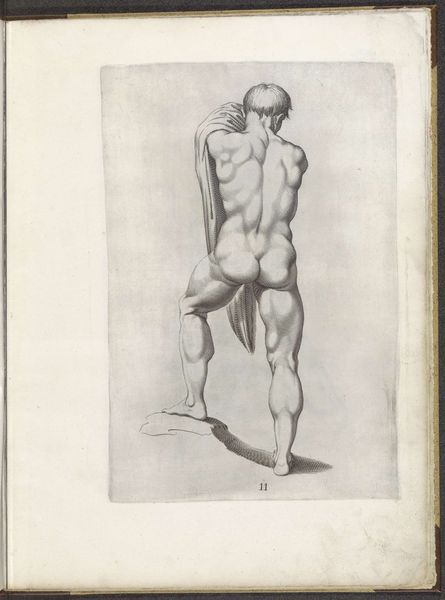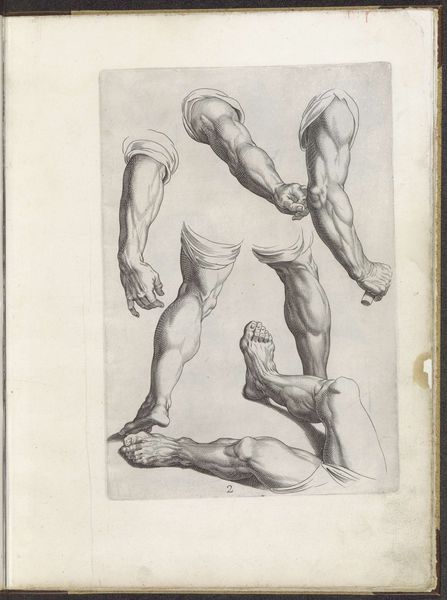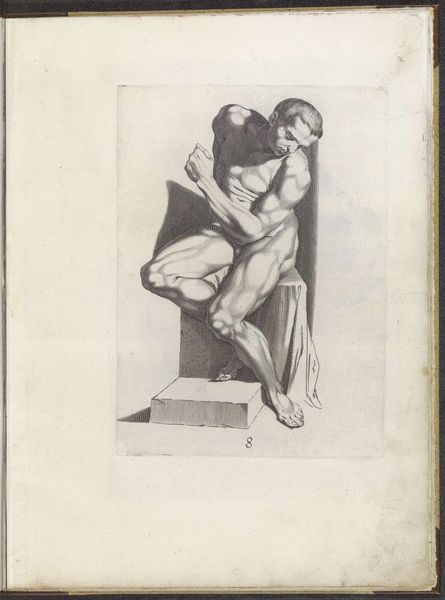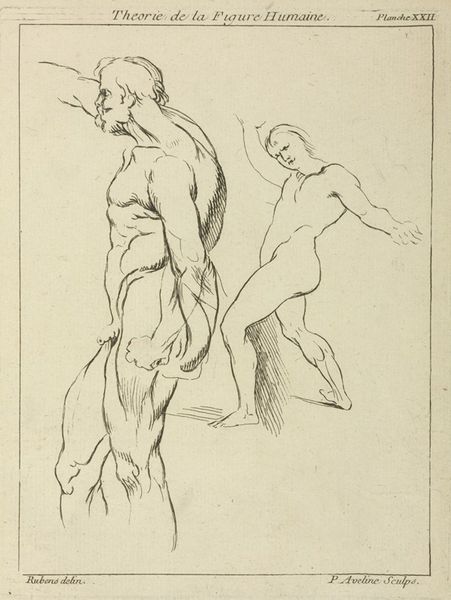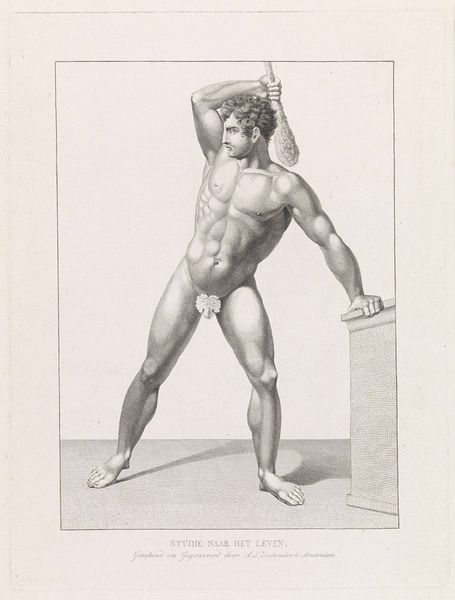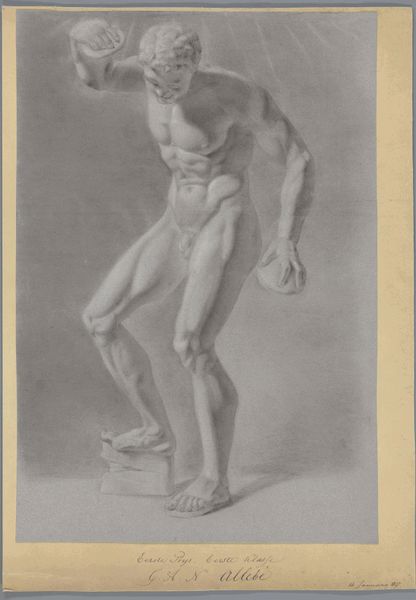
drawing, print, engraving
#
drawing
#
baroque
# print
#
figuration
#
sketchbook drawing
#
academic-art
#
nude
#
engraving
Dimensions: height 272 mm, width 182 mm
Copyright: Rijks Museum: Open Domain
Curator: Ah, this is "Tekenvoorbeeld van een aan een touw trekkende man," or "Drawing Sample of a Man Pulling a Rope," an engraving from 1629 by Pieter de Jode I. What strikes you first about it? Editor: The figure's contorted pose—almost theatrical—immediately conveys a sense of exertion, perhaps even suffering. I wonder about the social context of his labor. Curator: The starkness of the Baroque style really emphasizes the tension in his muscles, doesn't it? Note how de Jode uses line and shadow to create volume and dramatic contrast. It's less about depicting realism and more about evoking an emotional response through the figure's form. Editor: And that brings up the material realities. The man is nude, tied by a rope and forced to pull—to what end? Considering the materials, engraving implies mass production; this image likely served some didactic purpose, possibly academic study or the distribution of standardized imagery of laborers to working engravers? It also shows a clear link to servitude, what were the material conditions that framed the execution of this image, and the production and marketing of this type of figure in that particular context? Curator: It’s fascinating how you bridge the aesthetic with historical contexts. But structurally, the rope acts almost like a visual bridge, connecting the figure's physical strain to some external force or unknown demand. Editor: Exactly. This highlights an asymmetry in the depiction of power—we only see the laborer, never the one issuing the demand, nor how that demand is constructed, or maintained. Consider the physical labor of engraving itself; the artist would cut into the copper or zinc to depict a subject pulling a rope… that layered level of craft becomes an intriguing commentary. Curator: The emphasis is, indeed, on a certain constructed power dynamic; still, consider the technical proficiency: observe the engraver’s ability to portray realistic anatomy through very few distinct markings—all serving the overarching design. Editor: Indeed, the artist's labour—and I emphasize the word "labour" as a counterpoint to high "art"—created an artifact consumed and reproduced… much like the depiction in his engraving! The parallels raise questions about who controls the means of representation. Curator: A potent point to end on, considering that Pieter de Jode's skillful craftsmanship clearly underscores an intricate power dynamic at work in this Baroque print. Editor: Yes, revealing so much with the humble and durable medium of engraving itself, it holds multiple, conflicting layers within a relatively small amount of work.
Comments
No comments
Be the first to comment and join the conversation on the ultimate creative platform.
